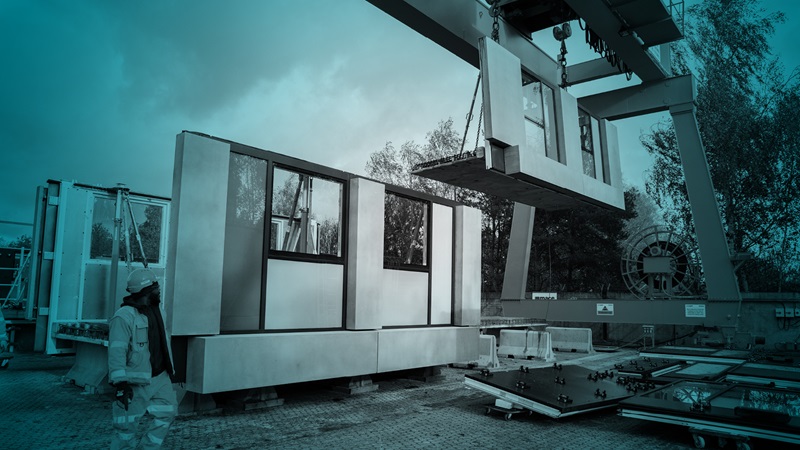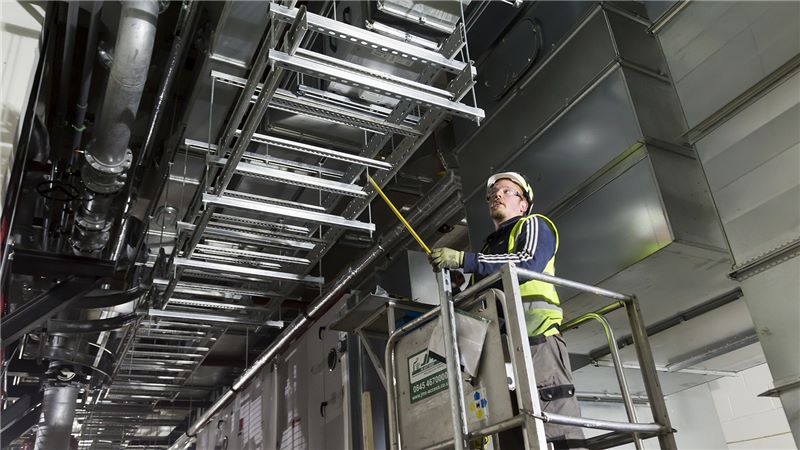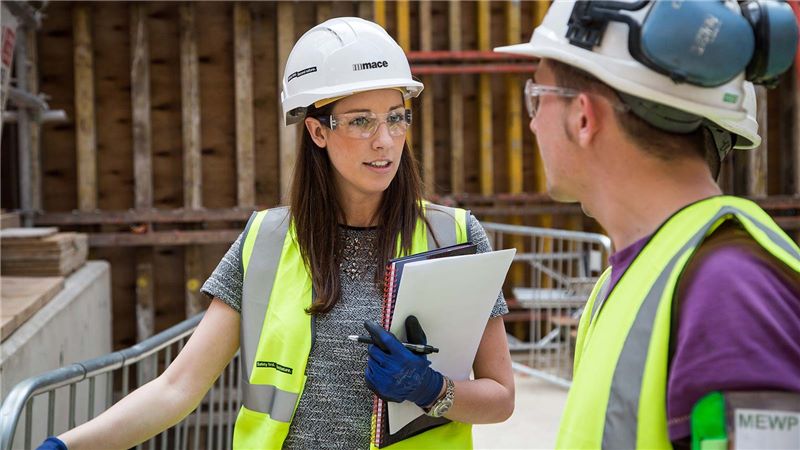Construction transformed: a pivotal moment
Coronavirus and its impact on the economy have exposed the vulnerabilities of the construction delivery model. With construction sites and supply chains around the world having to manage the huge impact of coronavirus, it is clear that our industry must make radical changes – and quickly.
This challenge should be seen as a huge opportunity to address some of the issues we have been working to overcome for decades. In this paper we explore the need for change, the unique challenges thrown up by the pandemic and the key steps the industry should take to manage them.
Green shoots of change in construction
Progress on delivering change in construction has been slow. The industry’s outdated contractual mechanisms and low margins make it difficult for companies to invest in new approaches.
However, in the last five years we have begun to see a step change in progress on construction innovation; from modern methods of construction, to technology that delivers better safety performance and low carbon materials that are beginning to make a real impact.
These green shoots of change provide us with an excellent foundation from which to push for further progress. However, progress has been slow and limited by a traditional mindset and a risk-averse approach to investing in new approaches.
As a result, there are six key areas where the construction industry was already in need of radical change before the pandemic struck:
1. Productivity
Construction productivity using traditional methods has not risen significantly in decades. Construction labour-productivity growth in the UK has averaged 1 percent a year over the past two decades, compared to 3.6 percent in manufacturing.
2. Quality
Delivering consistently high quality products is difficult to achieve when using traditional methods of construction.
3. Workforce demographic
The construction workforce is aging, and the industry is struggling to attract young talent to a sector that is seen as outdated and out of touch.
4. Digitisation
Slow adoption of digital tools across the project lifecycle has meant missed opportunities for productivity improvement.
5. The carbon challenge
40% of carbon emissions come from the built environment across the globe. The construction sector has not yet risen to the challenge of delivering significant carbon reductions across the life cycle of a building.
6. Platform solutions
The adoption of platform and pre-assembled solutions has not yet reached the mainstream and has often only been considered feasible for a small number of projects.
The impact of the pandemic
The coronavirus has forced widespread change on construction companies, clients and consultants across the globe. Following site shutdowns across the world the construction sector is now pushing hard to return to pre- Covid-19 productivity.
However, it is now clear that – at least until a vaccine is produced – we are unlikely to ever return to the same levels of output on our sites without radical change in how we deliver.
This is because the coronavirus crisis has thrown into sharp relief the challenges of our traditional delivery model where sub-contracted labourers are manually executing the vast majority of the actual work on sites. At the same time, the temporary collapse or suspension of the global supply chain has demonstrated the fragility of the economy that supports construction all over the world.
Looking longer term, it is likely that worker mobility will be limited all over the world for many months to come – something that will challenge construction sectors in developed economies who rely on a high proportion of migrant workers to deliver much of their output.
Put simply, the pandemic has demonstrated how fragile our existing eco-system is – and in turn has shown us that we need a more integrated approach.
Towards a new model
The solution to these challenges is a modernised model of construction delivery – ‘construction to production’. Rather than a traditional design and build process, we can industrialise every element of the construction process by designing digitally and manufacturing as many standardised components of a building as possible off site before assembly on site.
On average, an off site manufacture and assembly method can achieve the same output as traditional construction methods for frame and facade, but with 60% fewer people on site and a 25% faster build programme. By driving a production line approach, we can pre-assemble and manufacture around 95% of our frame and façade components in a controlled factory environment, before they are delivered ready to install on site.
Mace is already delivering this model on projects in the UK as part of our Mace Tech business – but the global opportunity on offer if this model can be embedded into construction economies across the world is enormous.
Our recommendations
How do we make this radical change in delivery model a reality across the global construction industry and de-risk our industry in the face of coronavirus?
1. Digital overhaul of construction operations
From development, planning, design and all the way to delivery on sites, we need to operate digitally, and we need clients and industry partners help to make it happen. Digitisation gives us better access to data and helps us collaborate, avoid errors and make better decisions
A digital, platform-based approach to designing and manufacturing gives us a product design view of the buildings and projects we create, integrating all stages of their delivery. Suddenly the construction of projects begins to look more like assembling a product at a high and consistent quality.
The end goal is to move construction towards a digital platform of standardised components where clients are able to choose the design of their projects using real time data for accurate and transparent cost estimates.
Key actions:
- Everyone must review existing projects to explore opportunities for current productivity benefits.
- Contractors and consultants need to invest in digital skills across the entire construction supply chain.
- Contractors and consultants must assist clients to understand ‘value add’ of digital tools and design.
2. Creating scale in off site construction methods
Before the pandemic and the lockdown, some clients took an ‘if it’s not broken why fix it’ approach, but it appears they are now starting to recognise the huge potential of new construction methods and going forward we are likely to see these more widely adopted. With an increase in demand, the change in scale will lead to even greater efficiency through an established infrastructure with common processes.
The use of off site assembly methods will be instrumental in improving delivery programmes, while having fewer people on site. Scale is vital in reaping the cost benefits of off site methods, so an industry-wide effort to adopt off site methods in delivering housing and infrastructure is needed.
Such scale can only be delivered at first through governments who are prepared to build clear pipelines of work on an ‘off site-first’ basis for contractors who are willing to invest in new approaches.
Key actions:
- Governments across the globe must lead an ‘offsite first’ approach.
- Contractors must maintain R&D investment despite the economic downturn.
- Contractors and consultants must quickly demonstrate an off-site post- Covid-19 off site productivity boost.
3. Integrating supply chains
Vertical integration of our supply chain can go a long way to address how prepared we are, as an industry, to successfully manage a crisis. It will also help us to build a more resilient supply chain; with the added benefit of providing an opportunity to re-balance the wider economy. We have to support our supply chains to use technology more effectively, helping us to better estimate our inventories without having to halt production at any stage. It will also help us have stricter oversight of our directly employed workforce and help us enforce social distancing on our construction sites and measure compliance.
Providing an integrated approach will help avoid delays in project delivery and increase the certainty of construction work, while we increase the transparency of all activity on construction sites.
Key actions:
- Everyone must focus on supply chain assurance across entire lifecycle
- Contractors to carry out detailed supply chain reviews to establish quick wins and pain points for integration.
- Suppliers need to review and adopt a platform and module approach.














